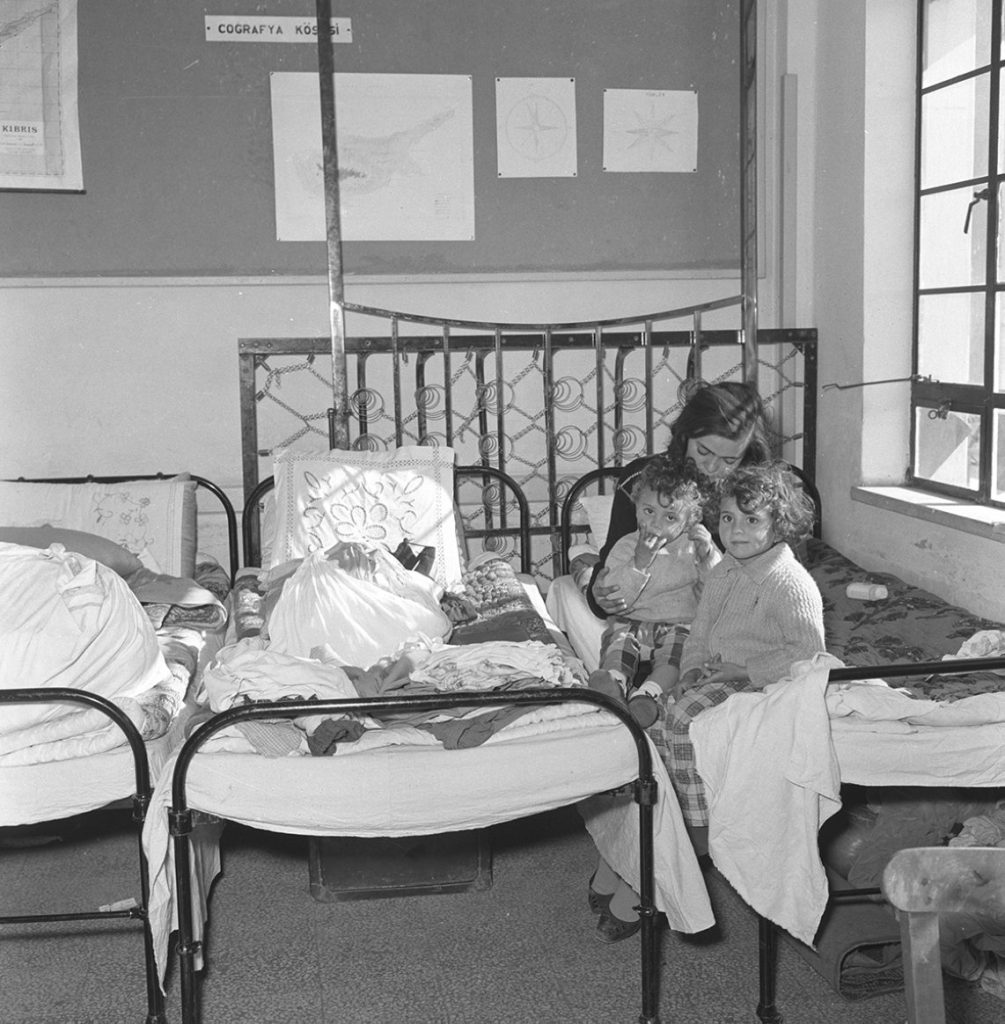On the 70th anniversary of the violent campaign launched by the EOKA terrorist group, the wounds of Turkish Cypriots remain painfully fresh. Created and orchestrated by the Greek and Greek Cypriot leadership, the EOKA was not a liberation movement – it was a violent insurgency with the singular goal of transforming Cyprus into a Hellenic island by eliminating the Turkish Cypriot presence.
The EOKA was established in 1952 in Athens. While publicly framed as an anti-colonial group targeting British rule, the EOKA’s true purpose was far more sinister: to achieve “Enosis” – the unification of Cyprus with Greece – through terrorism, assassination and ethnic cleansing.
“To understand the EOKA, one must first understand Enosis,” says Ismail Bozkurt, a Turkish Cypriot, a former Cypriot member of parliament and advisor to the late Turkish Republic of Northern Cyprus (TRNC) President Rauf Denktaş, who lived through the era and later became a resistance commander.
“Enosis means ‘union’ in Greek, but in practice, it meant annexing Cyprus – and even Istanbul, according to some maps – to Greece. It was an unrelenting obsession that began over two centuries ago,” he says.
On April 1, 1955, the EOKA initiated its terror campaign. Though it claimed to fight British forces, it soon turned its guns on Turkish Cypriot civilians. Turkish neighborhoods, villages and sacred sites were targeted in arson attacks, bombings and massacres. The death toll rose, and fear spread like wildfire.
“We had no military organization at that point,” Bozkurt recalls. “We started forming local defense groups out of necessity. I helped build one in my village, where Greeks and Turks had lived peacefully side-by-side – until the terror came.”
In 1957, three prominent Turkish Cypriots – Denktaş, Burhan Nalbantoğlu and Kemal Tanrısevdi – founded the Turkish Resistance Organization (TMT) to defend the Turkish Cypriot population. Backed by Türkiye, the TMT countered EOKA’s systematic violence. A short-lived Republic of Cyprus was formed in 1960, with Turkish Cypriots as co-founders.
But peace was only a mirage. In 1963, the Akritas Plan was leaked, revealing Greek Cypriot intentions to expel Turkish Cypriots and eliminate their constitutional rights. On Dec. 21, 1963, EOKA-led forces unleashed the “Bloody Christmas” massacres, murdering hundreds of Turkish Cypriots and displacing thousands.
One of the most horrifying acts was the murder of Medical Major Nihat Ilhan’s wife and three children, who were slaughtered in their bathtub. This haunting image became the symbol of the EOKA’s brutality.
“The aim was clear,” says Bozkurt, “to wipe us out before anyone could stop them.”
Between 1963 and 1974, over 100 Turkish villages were attacked. In Taşkent (Tochni), 85 men and boys were executed and dumped in unmarked pits. In Muratağa (Maratha), Sandallar (Santalaris) and Atlılar (Aloda), 126 women, children and elderly were massacred.
“In my village, they burned homes with people still inside,” Bozkurt recounts. “They tied up the men and shot them in the fields.”
Turkish Cypriots were left living in fear. Children grew up in hiding, women wept in silence and entire communities waited in terror for the next atrocity.
In 1964, at Erenköy, EOKA forces besieged Turkish students. Türkiye intervened with airstrikes. Turkish pilot Cengiz Topel was captured, tortured and killed – one of the many significant martyrs of Cyprus.
“Grivas attacked my region personally in 1967,” Bozkurt recalls. “We lost 24 men. It was pure slaughter.”
In 1974, a coup supported by the Greek junta installed EOKA terrorist Nikos Sampson as president of Cyprus. Türkiye – a guarantor power – launched its Peace Operation on July 20, rescuing and protecting Turkish Cypriots from what Bozkurt calls “certain genocide.”
Despite the bloodshed, the ideology lives on. During a March 25 military parade in Athens, soldiers were filmed chanting: “Cyprus is Greek, Türkiye out!” Days later, the archbishop of Greek Cyprus, George, stated: “We must fight to drive the Turks out of Cyprus and save our homeland.” In his Easter message, Greek Cypriot leader Nikos Christodoulides declared: “Enosis has never ended.”
“The EOKA no longer exists in name,” says Bozkurt, “but its soul is alive – in parades, politics, church sermons.”
The glorification of the EOKA continues in public symbols and ceremonies. Its anniversary is marked with full state honors in southern Greek Cyprus. Statues, coins, stamps and official speeches commemorate the EOKA as if it were a liberation movement, ignoring the atrocities committed under its banner. Christodoulides met with former EOKA members at a ceremony this year, declaring, “We will keep the spirit of EOKA alive.”
As Türkiye and Turkish Cypriots continue to call for peaceful dialogue, Bozkurt warns: “The terror didn’t vanish. The dream of Enosis is still whispered in Parliament halls and shouted in stadiums. Until that dream dies, peace will remain fragile and justice incomplete.”
In his final reflection, Bozkurt adds: “We survived not because the world intervened in time, but because we resisted with faith and our Motherland — the Republic of Türkiye – helped and saved us. And we will continue to exist – the EOKA is not forgotten.”


